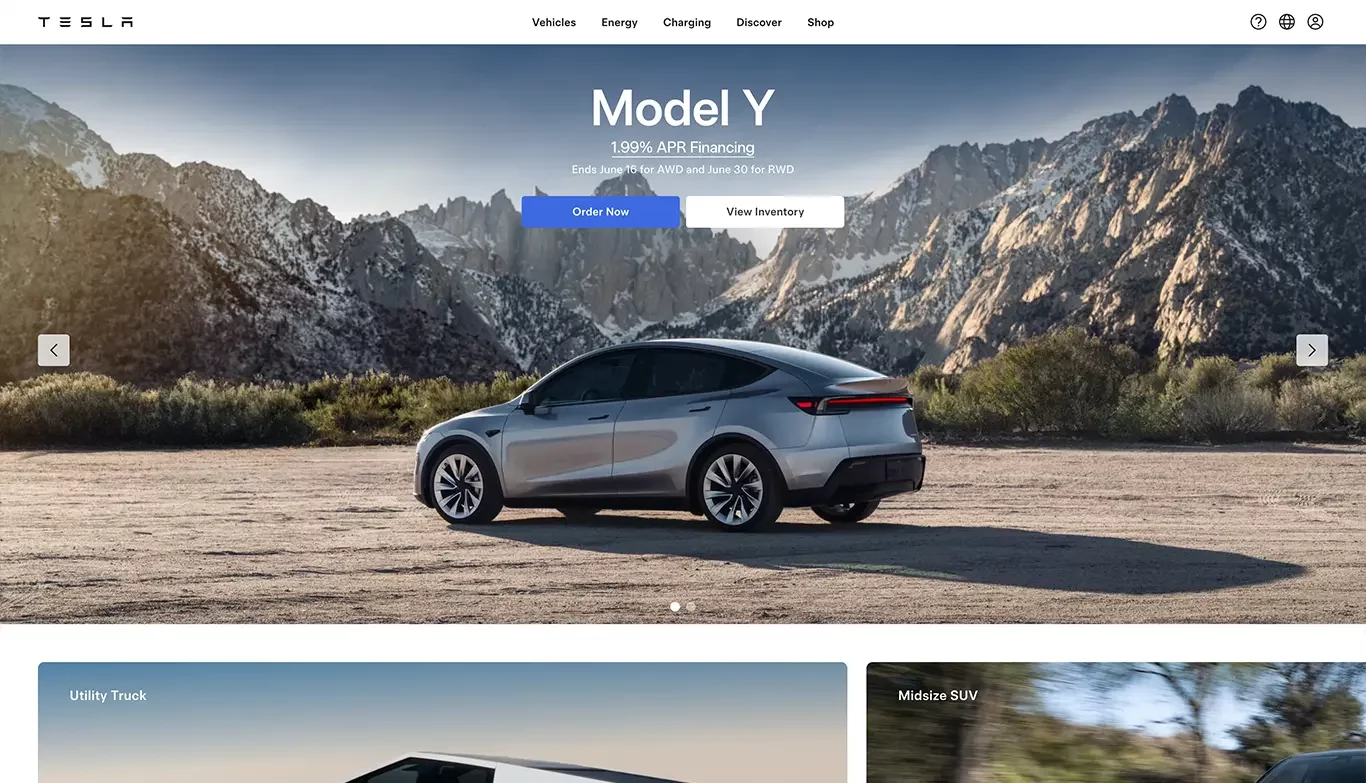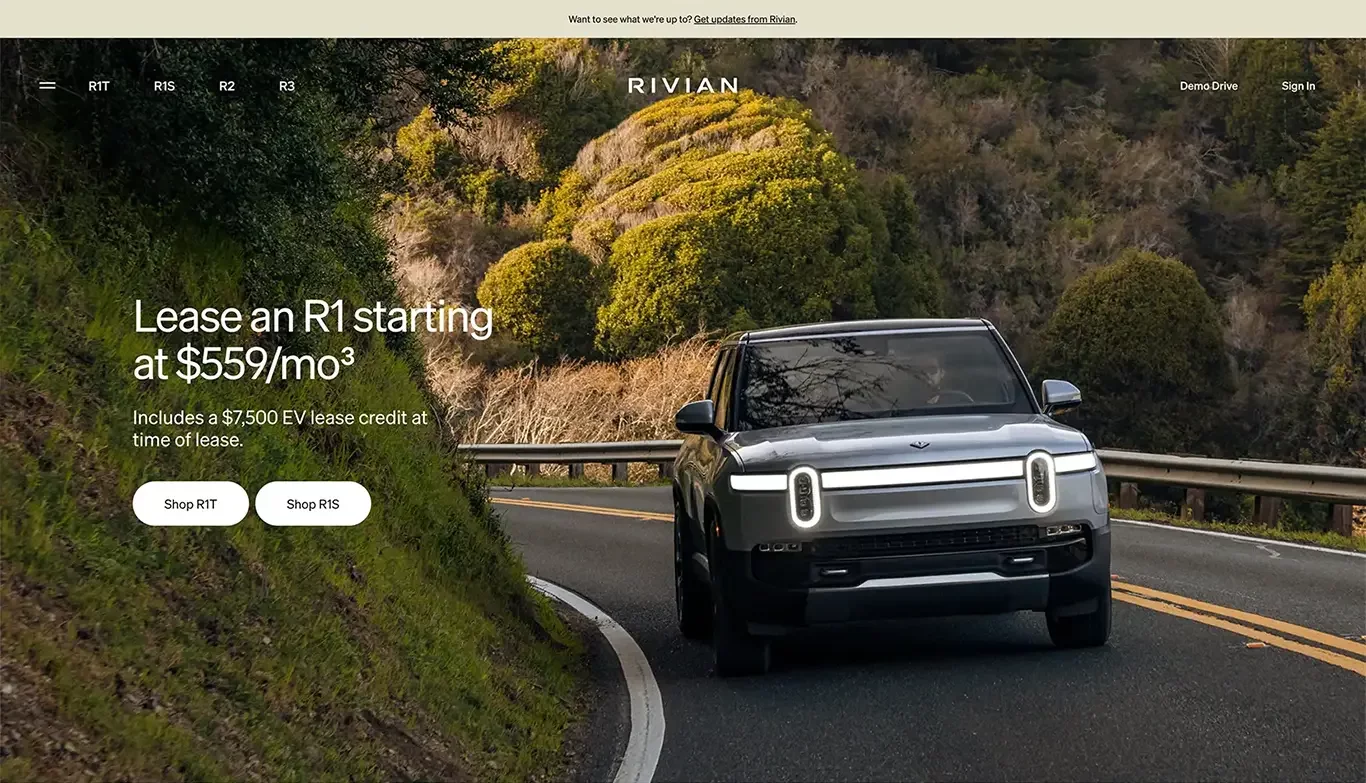10 Best Automotive Website Examples for 2025
June 11, 2025
In today’s digital-first world, your automotive website isn’t just a brochure—it’s your showroom. Whether you’re running a car repair shop, a tuning garage, or a full-scale dealership, great design helps build trust and drive sales. In this article, we’ve curated 10 outstanding automotive website examples that get it right—from sleek car brand sites to functional repair service pages. These examples offer inspiration and practical ideas to help you build a high-converting website for your automotive business.
Automotive Website Design Examples
Creating a professional automotive website doesn’t have to break the bank—or require expert-level design skills. If you’re starting from scratch, one of the easiest ways to build a traffic-driving site is by using a ready-made template.
These templates are crafted by experienced designers, with perfectly balanced layouts, fonts, color palettes, and visual elements tailored for the industry.
Modern website builders make customization incredibly easy. You can mix and match content blocks, add features, and tweak the design in just a few clicks—no coding required.
Many of the automotive websites featured below were built with platforms like Weblium, which offers a free version and industry-specific templates to get started quickly.
1. Rivian
Rivian’s website captures the essence of innovation and sustainability through a clean, immersive experience. Full-screen visuals, smooth transitions, and minimal text allow the vehicles to shine without distraction. The design leans heavily into storytelling—visitors are taken on a visual journey from nature-driven exploration to cutting-edge electric vehicle technology.
Navigation is simple yet powerful, with clear CTAs and intuitive menus. The bold use of white space and cinematic photography evokes premium quality, aligning perfectly with Rivian’s brand values.
2. Polestar
Polestar’s website is a masterclass in sleek, Scandinavian minimalism. It delivers a premium feel through clean layouts, refined typography, and carefully curated imagery. Each section is stripped of clutter, letting the design and message speak clearly.
From exploring car models to learning about sustainability, the navigation experience is smooth and intuitive. Subtle animations and transitions add a sense of sophistication, reinforcing Polestar’s identity as a forward-thinking electric performance brand.
3. Infinite Machine
Infinite Machine’s website feels more like a cinematic teaser than a traditional automotive site. With dramatic black backgrounds, bold typography, and high-contrast 3D renders, it immediately commands attention. Every scroll reveals a new visual layer, drawing the visitor deeper into the world of their futuristic electric motorcycle.
The layout is unconventional but purposeful—crafted to build intrigue. Animations, parallax effects, and ambient sound all contribute to an immersive brand experience that feels more like an art installation than a product page.
4. Kia
Kia’s website combines mass-market accessibility with modern, high-impact design. From the homepage, users are welcomed with vibrant visuals, bold calls-to-action, and smooth navigation that highlights their diverse range of vehicles.
The interface is packed with helpful features—model comparisons, build tools, and dealership locators—all wrapped in a clean, user-friendly layout. Thoughtful use of video, photography, and interactive elements makes the site both functional and engaging for a broad audience.
5. Volkswagen
Volkswagen’s website strikes a balance between classic brand identity and modern design. Clean grids, consistent typography, and intuitive navigation create a structured and approachable experience. The homepage showcases their latest models with bold imagery and concise messaging.
Interactive tools like the build-and-price feature and model filtering enhance usability, while subtle animations add a layer of polish. The overall design reflects VW’s commitment to reliability, innovation, and broad appeal.
6. Taiga Motors
Taiga Motors’ website delivers a bold and adventurous tone that mirrors their all-electric powersports vehicles. Full-screen videos and immersive visuals instantly showcase their snowmobiles and watercraft in action, emphasizing performance and environmental responsibility.
The design uses a dark, high-contrast palette with bright accent colors to create energy and focus. Smooth transitions and strong CTAs guide users through the product line with a sense of speed and excitement.
7. NIO
NIO’s website blends futuristic aesthetics with luxury design sensibilities. Large-scale visuals, animated transitions, and a minimalist layout convey innovation and elegance. From the moment you land, the site feels like a digital showroom—quiet, confident, and high-tech.
Interactive product pages walk visitors through design, features, and battery tech in a highly visual way. With global reach in mind, the site supports multiple languages while maintaining a consistent, refined brand experience.
8. Lexus
Lexus’s website exudes sophistication and precision, much like its vehicles. A sleek, dark-toned interface is paired with crisp imagery and refined typography, creating a premium digital environment. The homepage immediately positions Lexus as a luxury brand with performance at its core.
Smart mega menus, car model showcases, and customization tools are presented with clarity and ease. Every interaction—from exploring hybrid technology to booking a test drive—feels streamlined and high-end.
9. Tesla

Tesla’s website reflects the brand’s signature simplicity and focus on innovation. The clean, all-white interface is free from clutter, letting the products take center stage. Visitors are greeted with full-screen visuals and straightforward CTAs—buy, order, or learn more—with almost no distractions.
Navigation is minimal but efficient, guiding users directly to vehicles, energy products, or company info. The overall experience mirrors Tesla’s design philosophy: minimal, bold, and built for speed.
10. Range Rover

Range Rover’s website radiates elegance and power, perfectly aligned with the brand’s luxury off-road vehicles. A dark, sophisticated color scheme sets the tone, while high-resolution visuals highlight every detail—from rugged performance to refined interiors.
The browsing experience feels premium, with smooth transitions, immersive product pages, and a strong editorial feel. Visitors can explore models, customize features, and book a test drive—all within a highly polished, visually rich environment.
Wrap Up
Whether you're launching an electric vehicle startup, running a repair shop, or building a luxury auto brand, your website plays a critical role in shaping perception and driving conversions. As these examples show, great automotive website design isn’t about flashy gimmicks—it’s about clear structure, powerful visuals, and seamless user experience.
Take inspiration from the brands above and create a site that reflects your values, attracts the right audience, and drives your business forward—on or off the road.



Browse the full Automotive website collection
Discover even more creative and modern website designs.
yearly subscription







